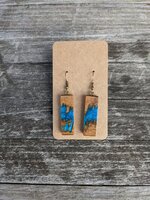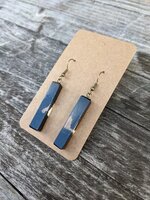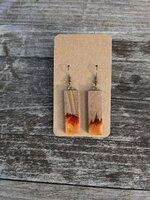I think it's always a good idea to start simple and learn your way around resin and pouring techniques. Color pours are good for that using Alumilite white or clear. This way you get to experiment with dyes and mica pearls and can easily transition to embedded objects like pine cones and such. Tube on clear casting is another good start. Mostly because your casting steps are always the same and there's no waiting for certain resin temps, but what you put on your tube changes. You will spend more time building your blanks before you cast it but there are so many objects to incorporate like sea shells, thin celluloid, labels, watch parts and such. Your learning curve will be how the resin reacts to each object. Clear casts can be silmar 41poly resin or alumilite clear. Either way you will want a pressure tank because bubbles are easily seen in clear casts. Some like clear slow for more working time. The only draw back with starting with any alumilite is you'll need a pressure tank. Regardless of what your doing, there's a small expense... resin, molds, release spray, dyes and mica pearls, pressure tank, and air compressor.
You can get by without a pressure tank with silmar 41 poly resin doing color cast. The issue is it's hard to keep color separation in multi colored pours but Single mica pearl and dye pours work great. Silmar 41 is about half the price of Alumilite Urethane clear resin but it also has a strong odor where alumilite does not. There are plenty of pros and cons with using each. Most are mentioned here in past conversations that are searchable. Good luck and I hope to see some of your casts posted here when done !





